First of all, we need two specialized vacuum tubes for amplifying the ambient light. Again, the Soviet Union legacy proves to be useful: V-8 tube.
B-8 (Cyrillic "B" in English it's V), made in May (5th month), year is 1981. There's also the manufacturer logo, probably some military factory, and also the manufacturer-issued serial number.
In front it's the light receiving window.
In the back side there's a phosphorus window which shows the intensified result.
This is a 2nd generation light intensifier tube, one of the best available. We need two such devices, a toy binoculars and a helmet to install everything.
This tube has an anode (between the fingers) and a cathode which is located as a metal ring in the exterior. It must be powered at around 15kVolts to get the desired results.
Binoculars:
Somehow I need to replace the prisms with the tubes, and this baby has a lot of space.
Left side tube is already installed. These details cover the right side install.
Protection ring comes with the tube - if acquired from military surplus source. Need to make 4 (four) holes, 2 millimeters in diameter. Phosphorus window is oriented to the eye lens.
A little fine tuning of the lens distances will be performed after powering on the system.
In order to accomplish this, we must ask for help from the Soviet Union military surplus: two high voltage rectifying diodes and a transformer-based voltage converter, in order to power it from 12V (car lighter):
This is a classic single transistor, single transformer feedback oscillator.
Please excuse the dirt on my hands and on my desk. This is my work place laboratory, I'm currently performing some maintenance for some oil drilling pressure sensors. The dirt I handle in the oilfield is cleaner than the dirt they handle in the offices and I'm proud of that.
You are probably wondering why do I prefer this ancient converter instead of building a modern one with some microcontroller, a PWM output pin, some FET transistors and a small switching transformer.
First of all, this is insulated and protected from shock and moisture, including these two high voltage rectifying diodes.
Second, I need this baby to balance the binoculars weight on the helmet: binoculars stay in front, converter in the back side.
I'm wearing the helmet while driving, this is stressful enough and I need the hands free of any additional tasks.
Helmet is also military surplus, used by tank crew in the old days. Keeps warm, it has earphones included and it can be "upgraded" with metal work.
Helmet is balanced...
...and ready for final optic adjustments.
Night-time test drive:
This is raw video footage recorded with a Samsung Galaxy Trend Plus S7580 rear camera. It reacts weird to bright images, normally the picture is clear. Anyway, when brightness is low, the camera can capture/record the road and trees in clear.
Message for the feds/police: THE FOOTAGE IS RUNNING AT 2x PLAYBACK SPEED, I DID NOT DRIVE LIKE CRAZY!!!
In the mean time - if you decide to build this thing, you must be careful not to power it up in day light without covering the lens. You will burn the phosphorus windows and the tubes will become useless.
 [skaarj]
[skaarj]
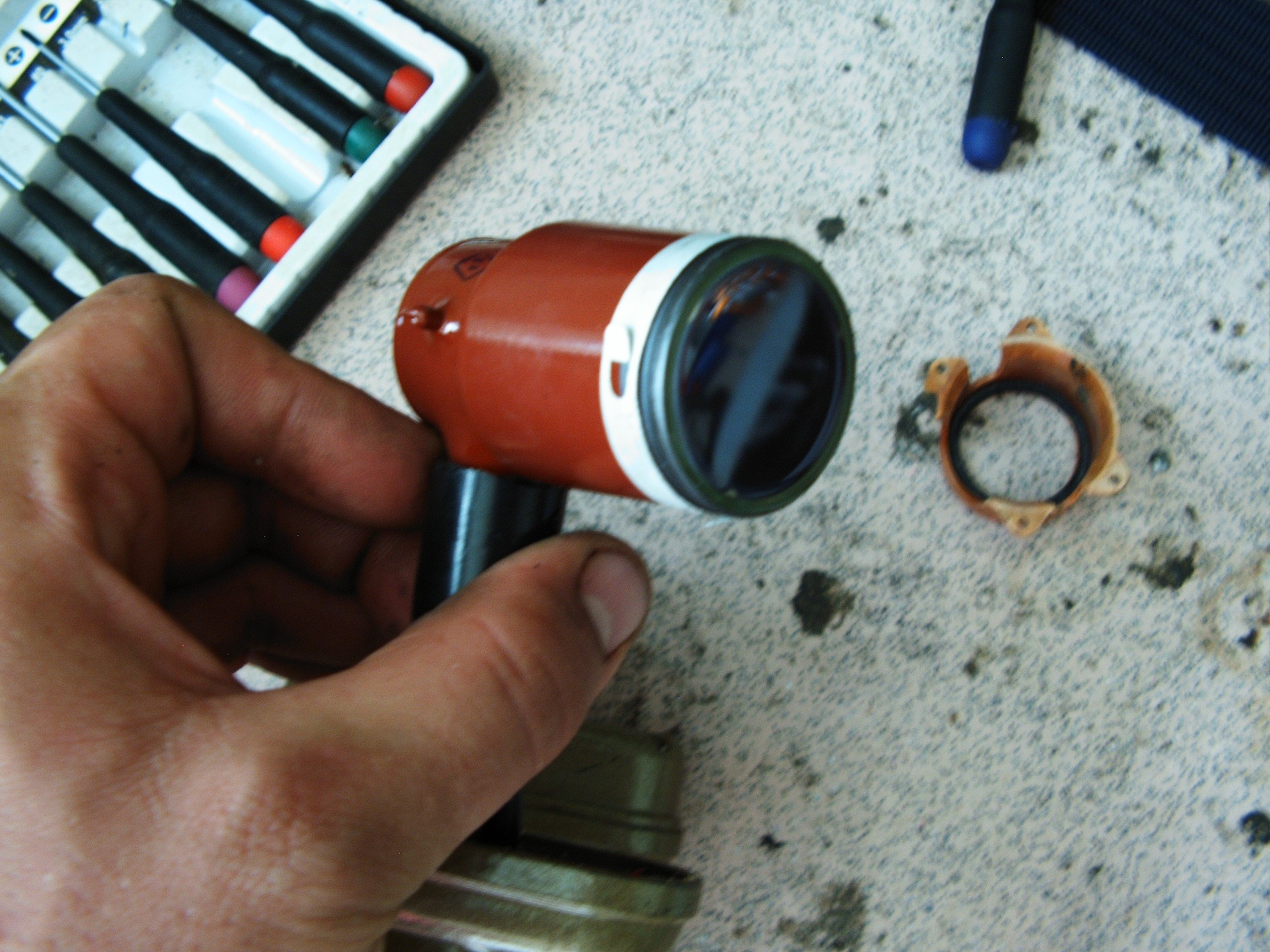

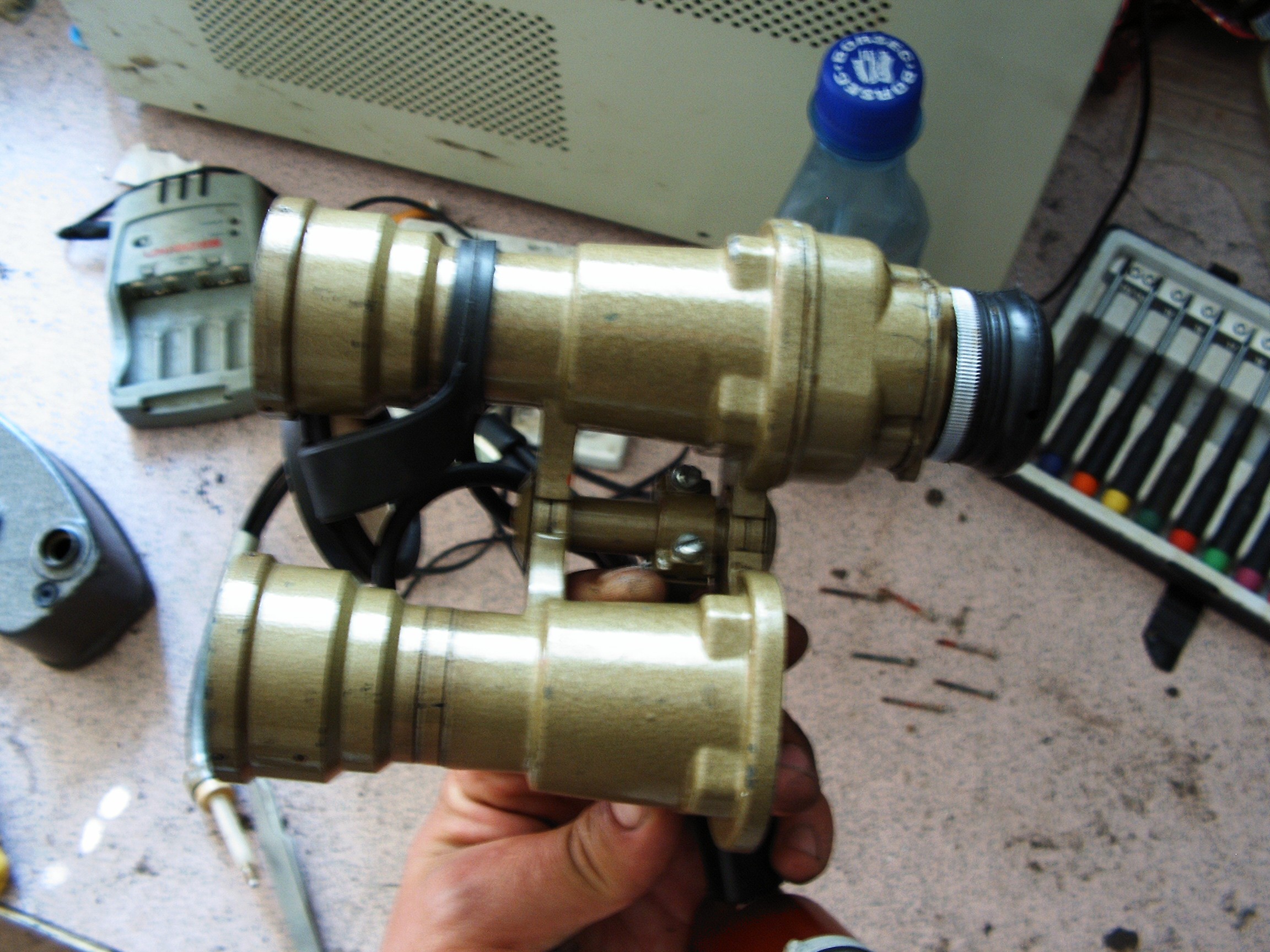


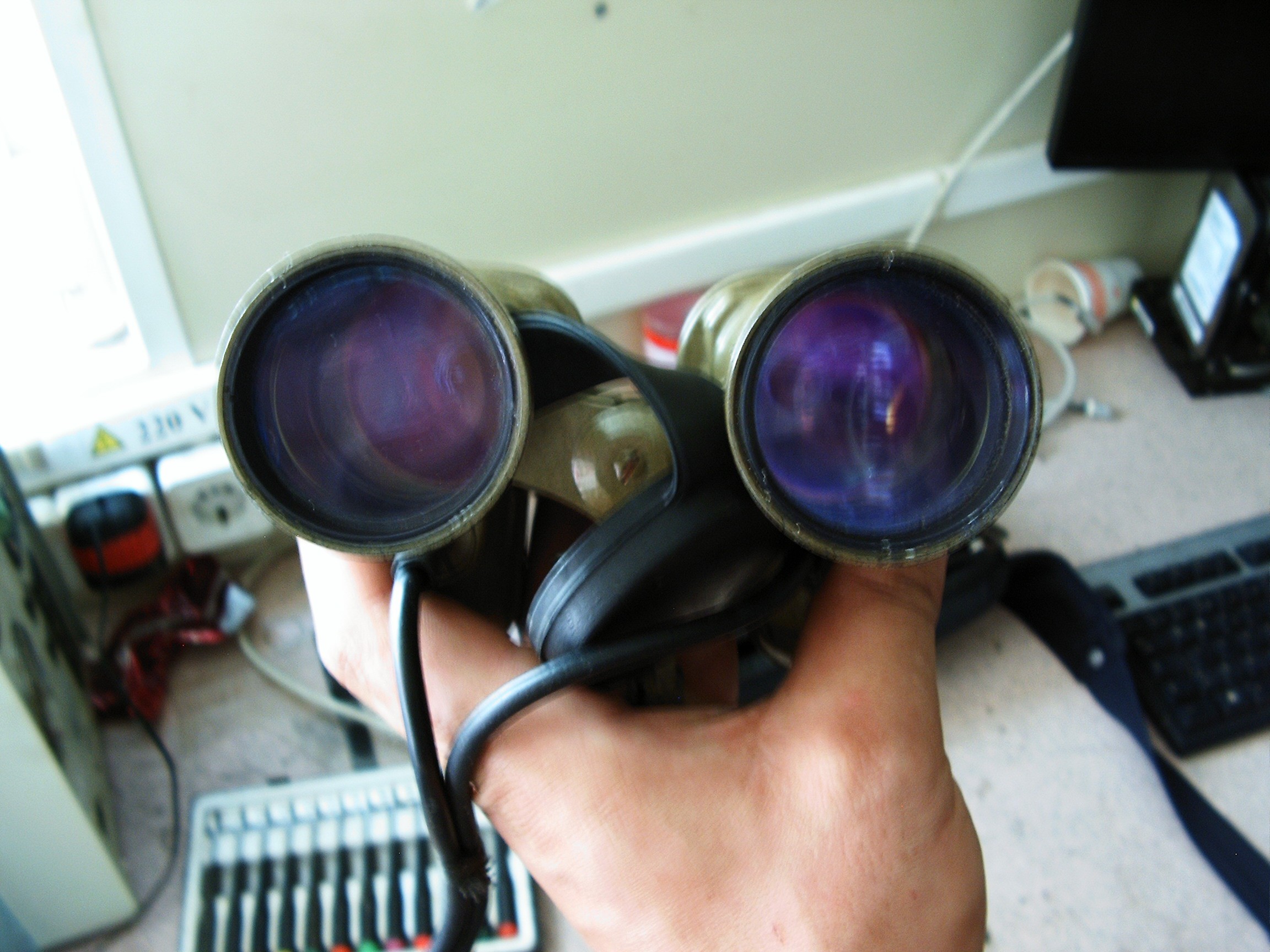

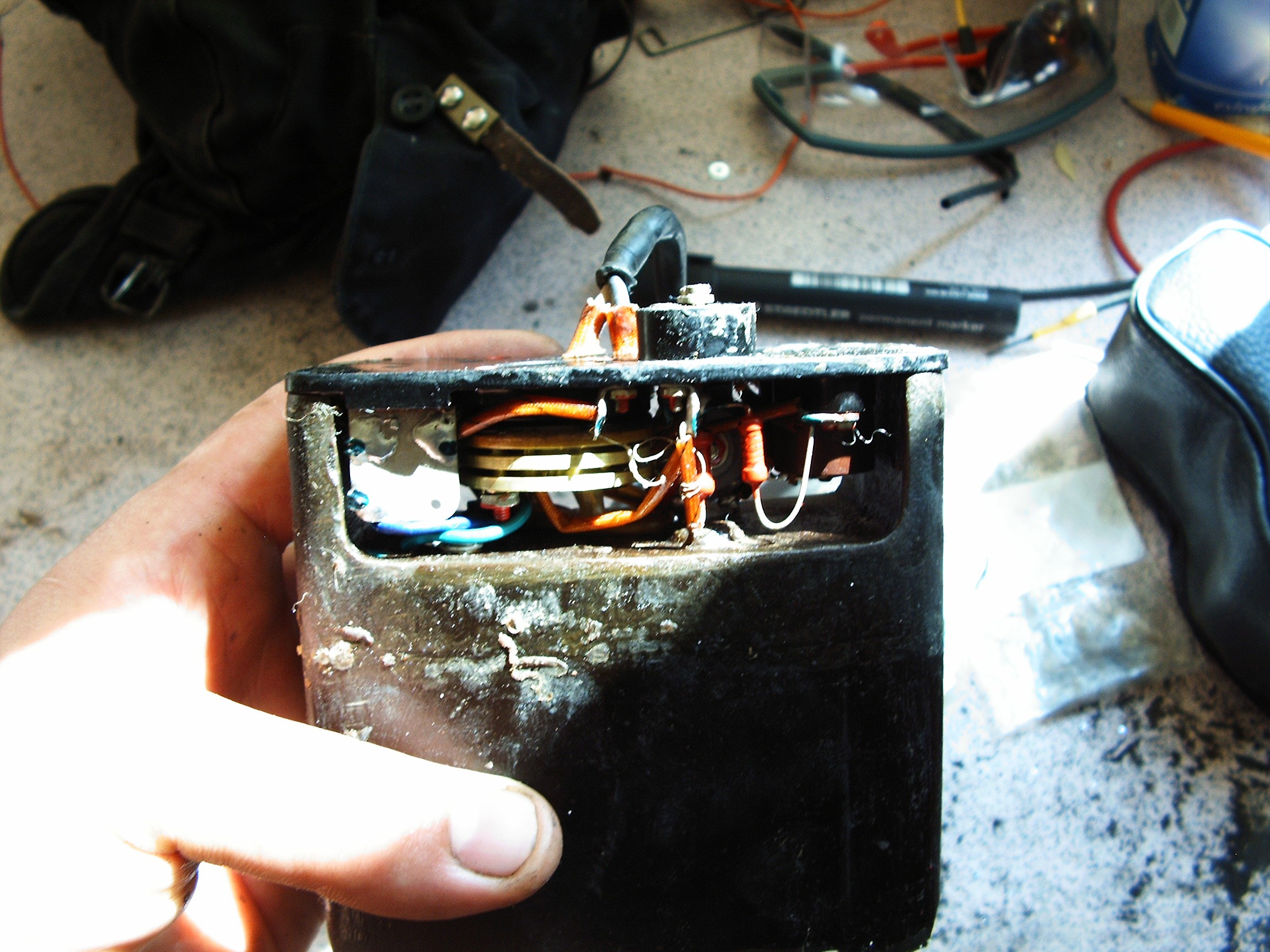
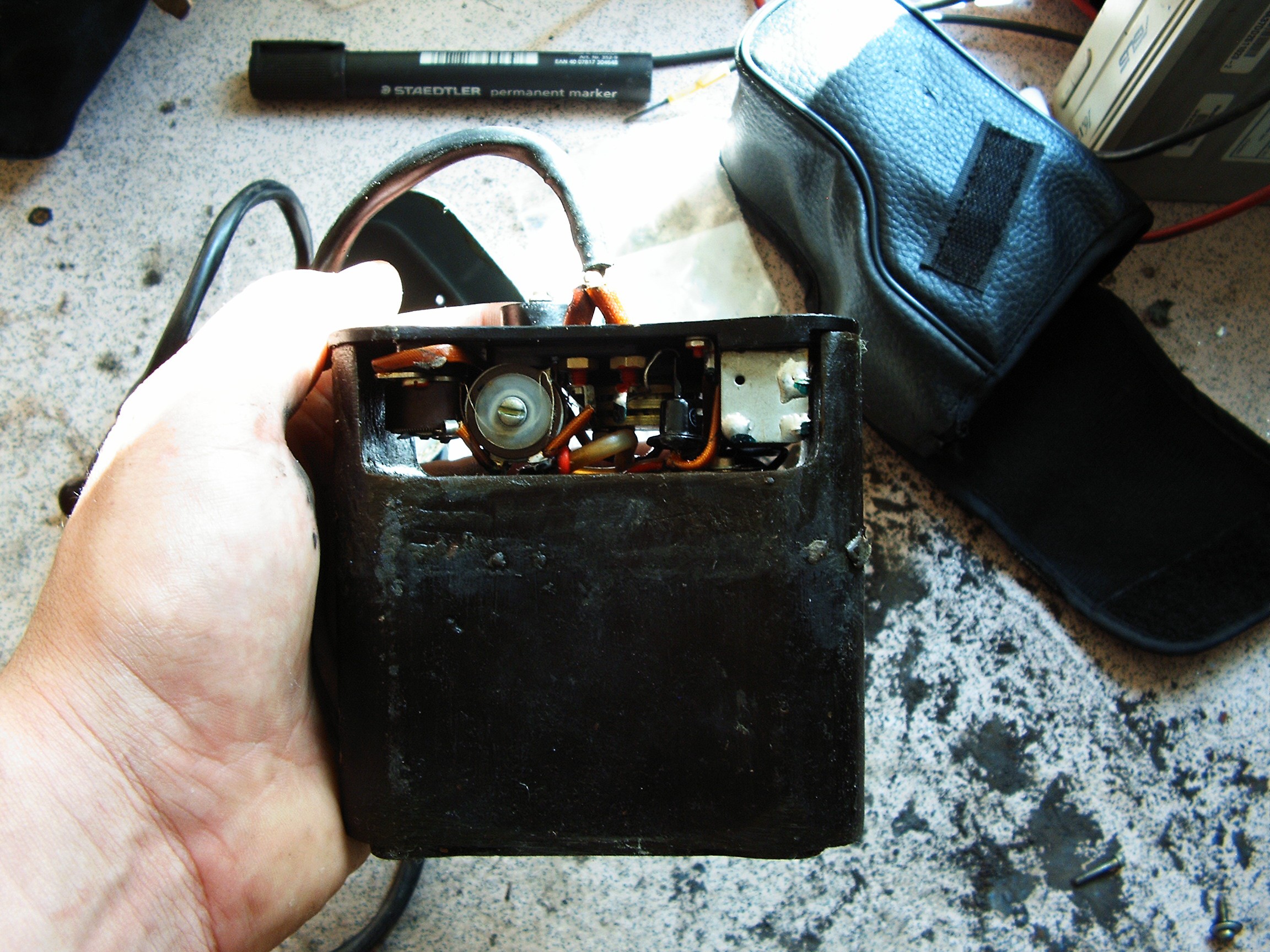
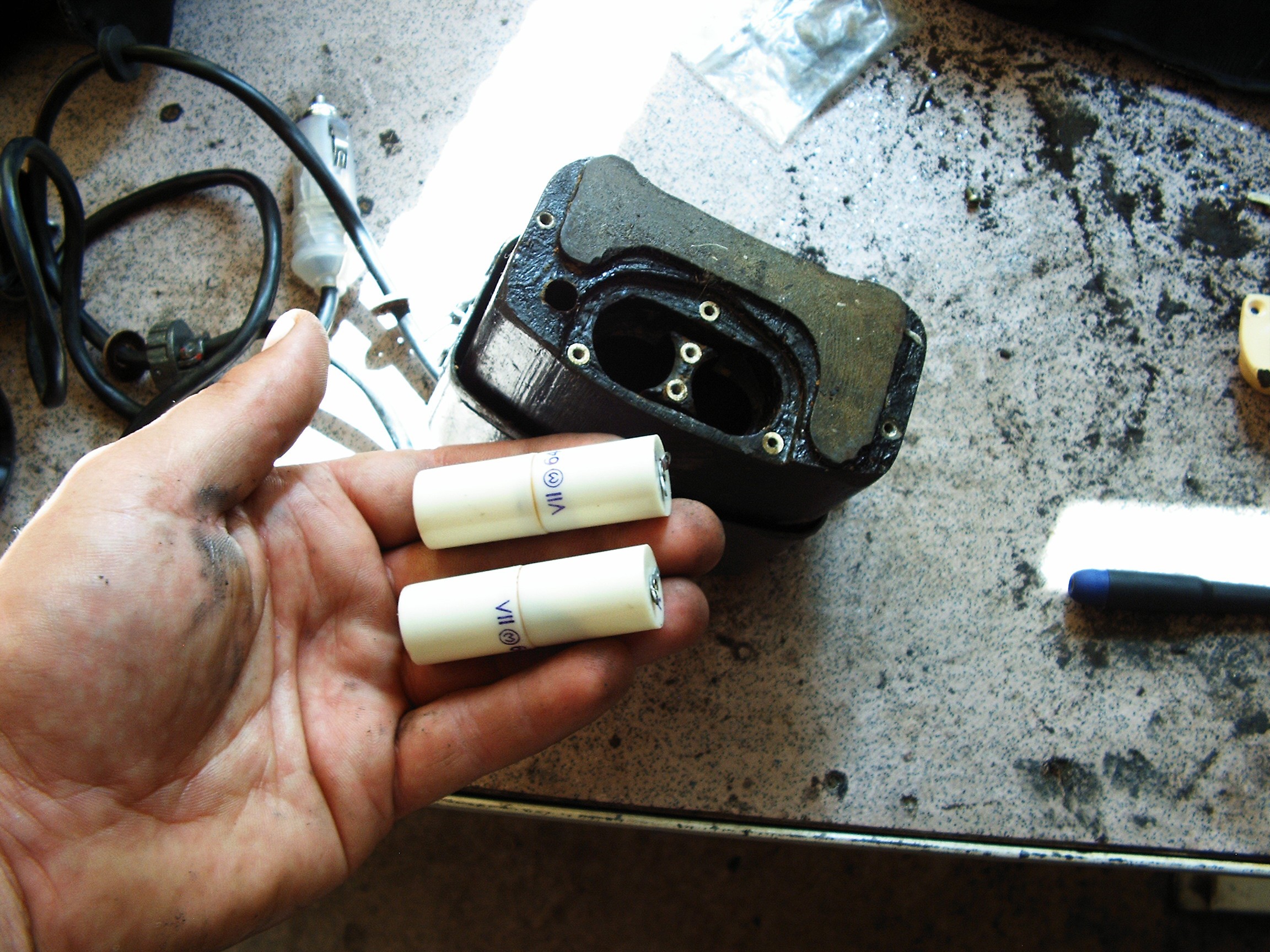

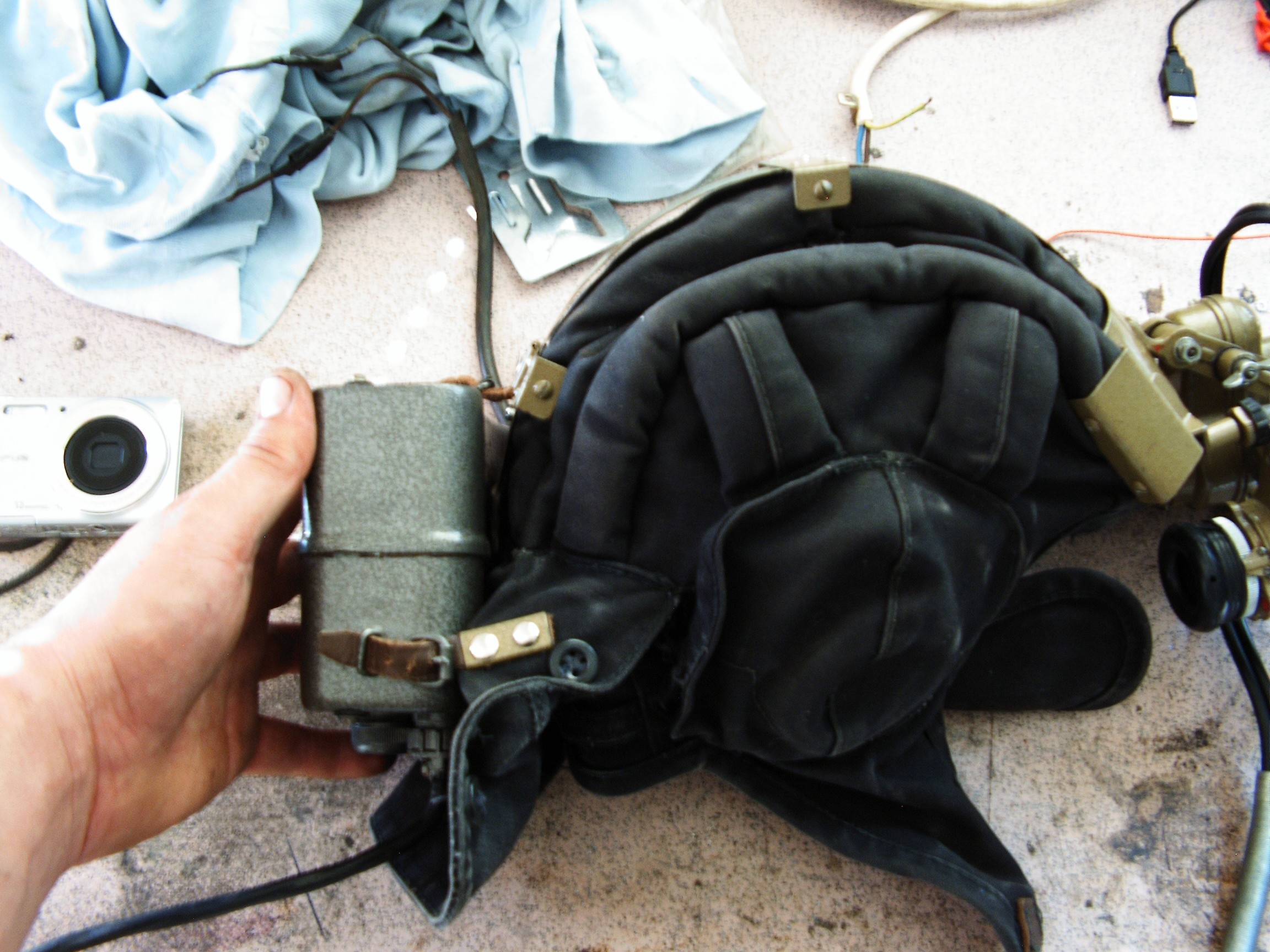

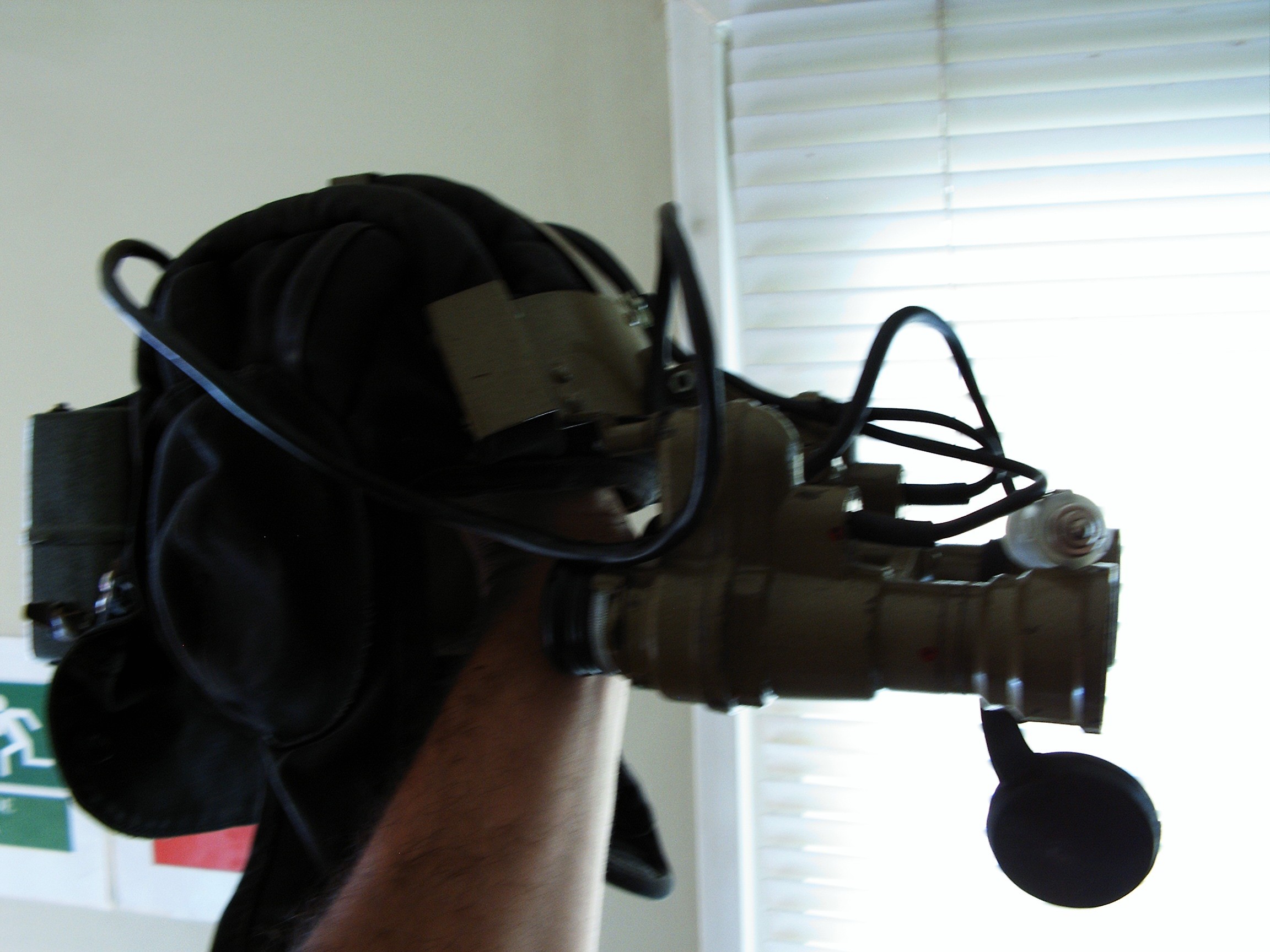
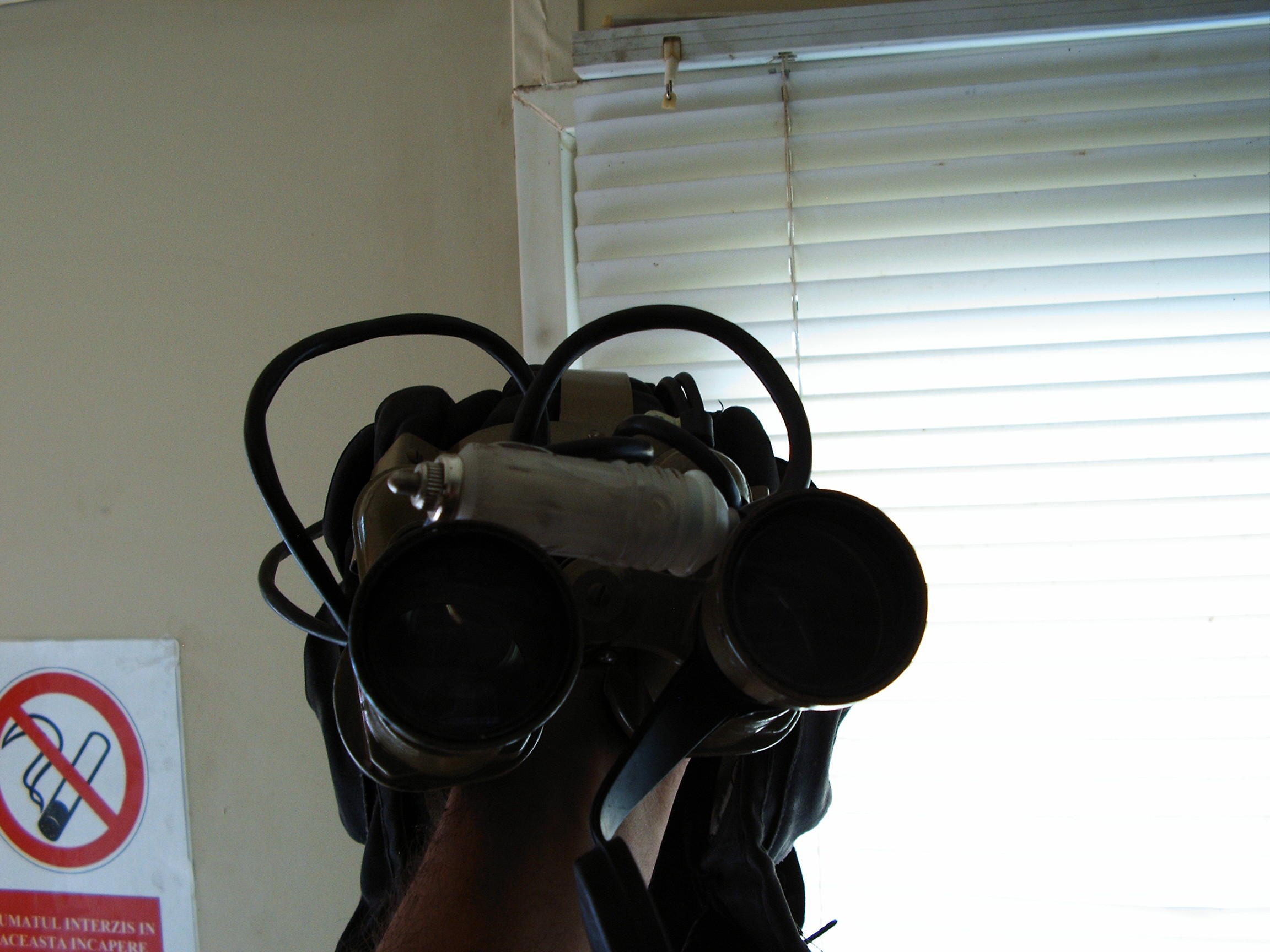
Discussions
Become a Hackaday.io Member
Create an account to leave a comment. Already have an account? Log In.
That helmet looks really badass.
If I would see guy in this helmet stepping out of heavily modded Dacia in the night - I would better tactically retreat and call Fox Mulder.
Are you sure? yes | no
....to cover my back while searching for wallet-sucking aliens.
Trying to film the helmet at night in action, it's hard to focus the camera while driving.
Are you sure? yes | no
Are there any issues when you encounter oncoming traffic or streetlights?
Are you sure? yes | no
No, if I am rested, fresh and I plan to drive for less than an hour. Street lights help to see better. In time my eyes will get tired due to these changes in light. Long distance driving requires an additional operation which is covered by the helmet mount mechanics: I rotate the binoculars 180 degrees over my head (helmet) and I have clear eye sight.
The bad issue is when some jerk is too lazy to switch from spot lights to low beam lights, that is when I have to be careful to turn the binoculars over the head and leave the eyes free, otherwise for one...two seconds I am temporary blinded due to sudden light intensity change. After the jerk passes, I just rotate the binoculars back over the eyes. This gets even worse if spot lights are combined with fog. This device is supposed to improve night time driving, but driver attention is also required: no rush, no speed, no driving crazy.
Oh, and the whole system weights around 2 kilograms, that may be another problem.
The film at the end of this log covers the experimental results in all conditions: pitch dark, car lights off, car lights on, driving in the city with street lights. Jerks included.
Are you sure? yes | no
I uploaded the night-vision video, check it out. Camera is bad and reacts horrible with bright light.
Are you sure? yes | no